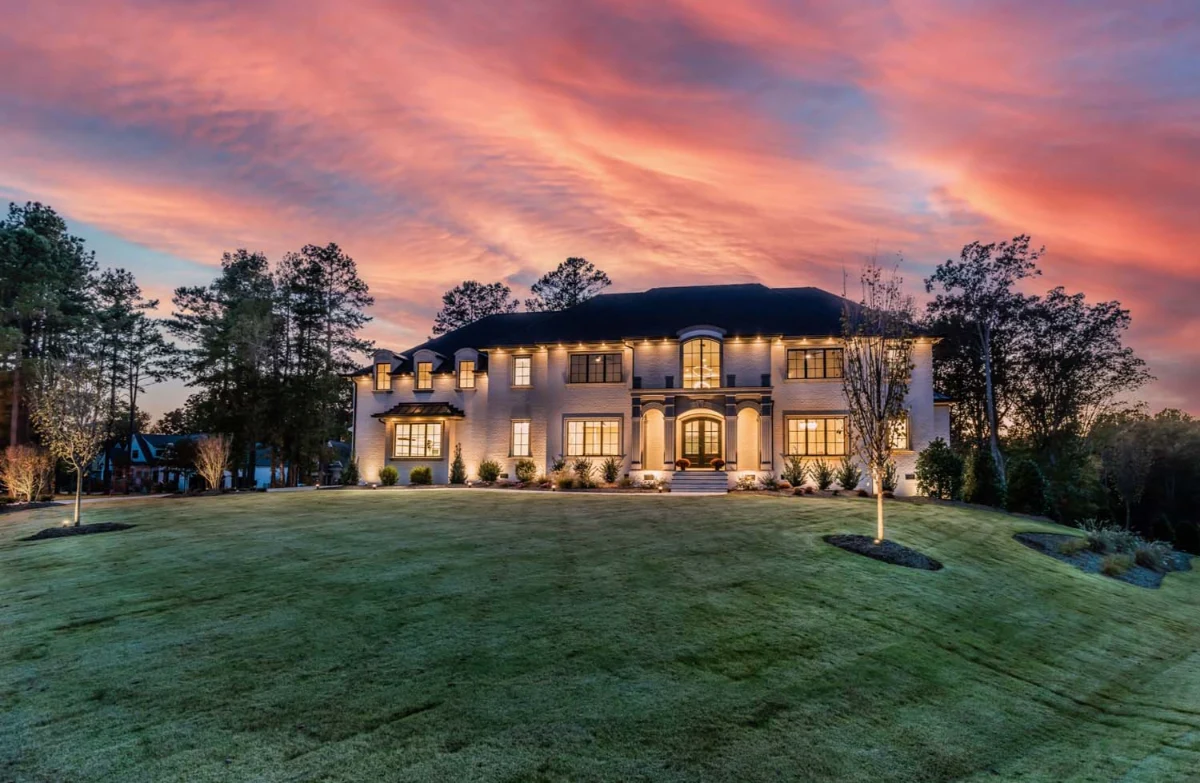The roof you choose plays a major role in your home’s appearance, energy efficiency, and long-term value.
From classic gable and hip roofs to modern flat designs, mansards, gambrels, and everything in between, each style offers its own pros, materials, and maintenance needs. Understanding your options helps you make choices that truly fit your property and lifestyle.
At Hafsa Building Group, we’ve helped countless homeowners bring their vision to life with roofs that are as durable as they are beautiful. We’ll help you confidently select a roof that reflects your home’s needs and your standards.
What Are the Most Common Roof Types?

Your roof’s shape affects everything from curb appeal to durability and drainage. Below are the 10 most common roof designs, each with its own structural strengths and visual character.
Gable Roof
Easily recognized by its triangular shape, the gable roof has two sloping sides that meet at a ridge. It offers excellent drainage and ventilation, making it popular in various climates.
Hip Roof
A hip roof slopes down on all four sides, providing extra stability and resistance to wind. It’s a favorite in hurricane-prone areas.
Dutch Roof
Also known as a Dutch gable, this style blends a gable with a hip roof for extra attic space and a distinctive appearance.
Mansard Roof
This four-sided design features two slopes on each side. The lower slope is steeper, creating more usable space inside.
Flat Roof
Almost level with a slight pitch for drainage, flat roofs are modern-looking and often used for rooftop gardens or solar panels.
Shed Roof
Also called a skillion roof, it consists of a single sloped plane. It’s simple, minimalist, and ideal for home additions.
Butterfly Roof
This “inverted V” design features two surfaces sloping inward. It allows for large windows and efficient rainwater collection.
Gambrel Roof
A classic barn-style roof with two slopes on each side, the gambrel maximizes headroom and storage.
Dormer Roof
Dormers are extensions with windows that project from a sloping roof, typically used to add light and space to upper stories.
M-Shaped Roof
Formed by two gables meeting in the middle, the M-shaped roof is eye-catching and suitable for larger homes needing complex layouts.
Roof Material Options: Pros, Cons, and Costs

Choosing the right roofing material is just as important as selecting the style. Here’s a breakdown of common materials, including how they perform, what they cost, and why they might be right for your home.
Asphalt Shingles
- Pros: Affordable, easy to install, widely available
- Cons: Shorter lifespan (15-30 years)
- Cost: $1.50 – $5.50 per sq ft
Asphalt shingles account for over 70% of residential roofing in the U.S., covering approximately 75% of homes, according to Roofers Guild (2024).
Metal Roofing
- Pros: Long-lasting, recyclable, fire-resistant
- Cons: Higher upfront cost, noisy during rain
- Cost: $5 – $12 per sq ft
Metal roofs last between 40 to 70 years depending on the material.
Clay and Concrete Tiles
- Pros: Extremely durable, resistant to fire and pests
- Cons: Heavy, requires reinforced roofing structure
- Cost: $10 – $20 per sq ft
Slate Roofing
- Pros: Elegant appearance, lasts over 100 years
- Cons: Expensive, very heavy
- Cost: $10 – $30 per sq ft
Wood Shingles and Shakes
- Pros: Natural look, good insulation
- Cons: Flammable, requires regular maintenance
- Cost: $4.50 – $9 per sq ft
Synthetic/Composite Roofing
- Pros: Lightweight, mimics natural materials, low maintenance
- Cons: Newer to the market, varies in quality
- Cost: $4 – $10 per sq ft
How to Choose the Right Roof for Your Home
Deciding on a roof involves more than looks. From climate to cost to maintenance, these are the practical factors to think through before finalizing your choice.
Consider Your Climate
Wind, snow, rain, and heat can all impact your roof’s durability. Hip roofs handle wind well, while metal and tile are ideal for hot climates.
Match Your Architectural Style
Your roof should complement your home’s overall look. For example, a gambrel roof suits colonial homes, while flat or skillion roofs enhance modern builds.
Evaluate Cost vs. Longevity
Asphalt shingles are budget-friendly but don’t last as long as metal or slate. Consider total lifecycle cost, not just installation.
Think About Maintenance and Repairs
Some materials, like wood, need regular upkeep. Others, like metal or composite, are more hands-off.
Look at Local Building Codes and HOA Rules
Always check your city’s regulations and neighborhood guidelines before making a choice.
Final Tips From the Professionals at Hafsa Building Group
Selecting the right roof is a balance between design, function, and long-term value. At Hafsa Building Group, we help clients choose roof systems that align with their vision and last for decades. With years of experience, our work reflects industry standards and craftsmanship you can trust.
Ready to talk about roofing? Contact us and let’s build something that lasts.






